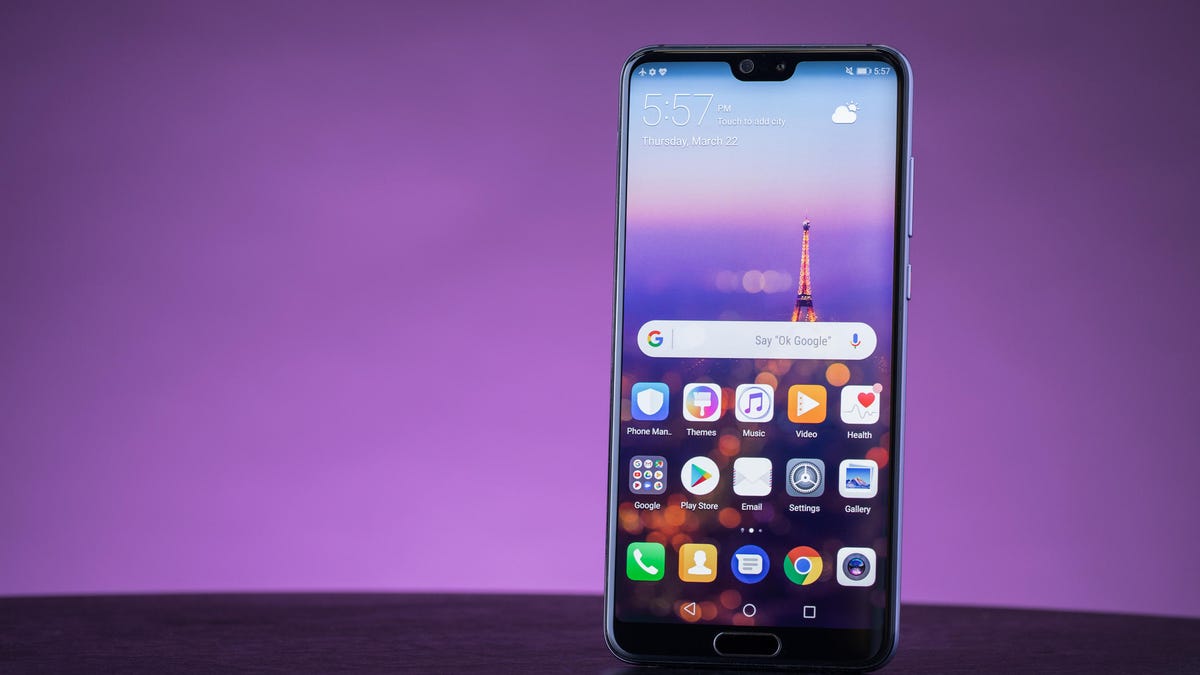Hate the iPhone X 'notch'? This phone lets you choose
To notch or not to notch? Huawei P20 lets you turn it off.

The iPhone X , may have the most famous "notch", but the best notch-screen design doesn't come from Apple at all.
Today, that honor goes to Huawei, whose P20 and P20 Pro let you quickly and oh-so-easily hop into the Display settings to toggle the notch off. It's that simple.
What's the big uproar over the notch anyway? Found first on the iPhone X and Essential Phone , critics feared that this cut-out on the phone's face for the front-facing camera and other sensors would disrupt a phone's all-screen aesthetics. People also worried it would take a chunk out of full-screen movies and apps. (We've found that it rarely gets in the way.)
But like it or not, notched-screen designs are coming up big. Even Google , whose Android software runs 80 percent of the world's phones, has added notch support to its future software release, called Android P. Pretty soon Android phones that come with a notch won't be singled out as "iPhone X clones."
The iPhone X made the notch a thing.
So here's how Huawei handles the notch naysayers.
The notch stays on by default on the P20 and P20 Pro. When you do turn it off, the screen to the left and right of the notch goes black, making the bezels look larger and the area of digitized screen look smaller.
On the preproduction unit I saw, the un-notched top of the Huawei P20 looked like a sharp, straight line, while the the bottom of the screen had more subtly curved corners. It's a little thing, but one Huawei will hopefully fix by the time the production units roll around.
The more important point is how easy it is to make these things the owner's choice. Poof. Notch anxiety, gone.
Perhaps that's exactly what's in store for the upcoming LG G7 as well. Rumors suggest two models: one with a screen notch and one without. After seeing Huawei's P20 phones, it seems just as likely that you'll get to choose your layout on the LG G7.
And if we didn't have a notch, then what?
This isn't to that a notched screen is completely consequence-free.
On the iPhone X, the wings to either side of the notch get put to good use showing you the time, your battery life, and signal strength. But that also means there's less room at the very top of the phone to show you all your icons -- you have to pull the "shade" down to get to more detail on notifications (left) or Control Panel (right). That's the design trade-off.
So why even have it in the first place? The notch is about giving you the illusion that the screen stretches all the way up to the phone's top edge. In today's climate, all-screen phones with very skinny bezels are a marketing must.
While notches have all the momentum, a different Chinese brand has arrived at a creative, notchless solution. Vivo's Apex phone is a concept device with a nearly full-screen face and no notch at all. Instead, its camera pops up out of a hidden housing when you want to take a photo.
It's a wacky idea, but hey, no notch. Me, I think Huawei's on-again, off-again option is easy to implement and makes a lot of sense for anti-notchers who don't want to skip a phone out of spite.
Read next: Huawei P20 Pro one-ups Galaxy S9 with three rear cameras
Read also: Google's Android P is all about notches and notifications

